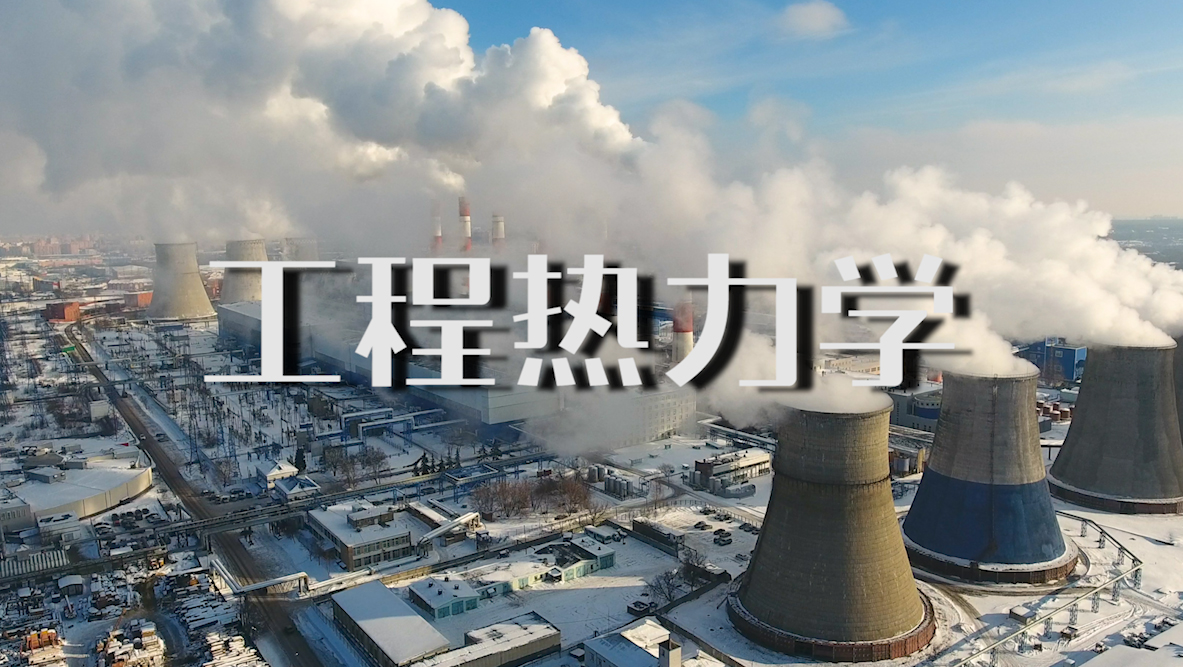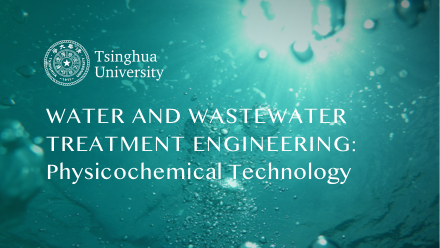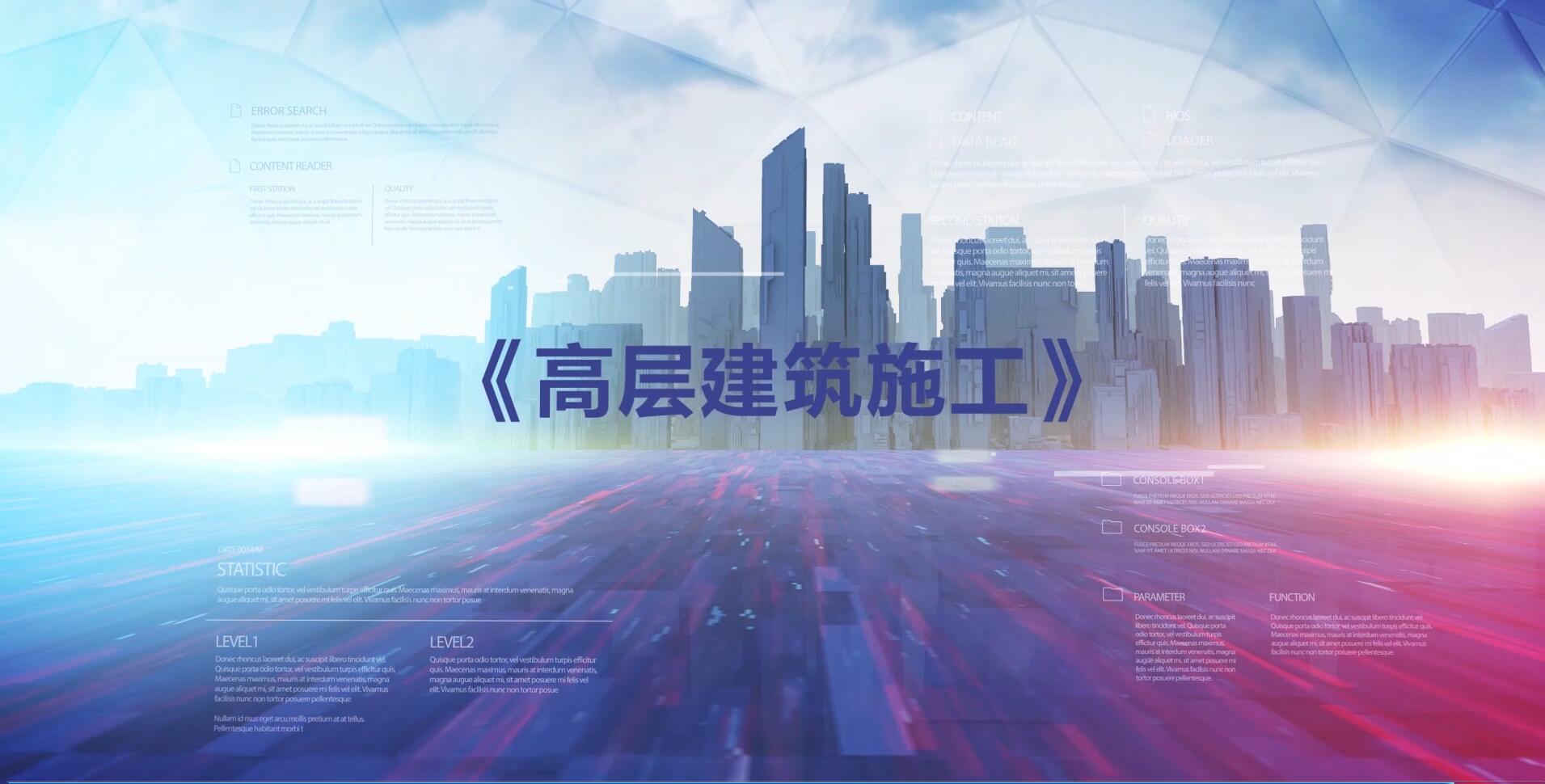
当前课程知识点:Water and Wastewater Treatment Engineering: Physicochemical Technology > Chapter 2 Sedimentation and clarification > 2-8 Plated sedimentation tank > 2-8 Plated sedimentation tank
返回《Water and Wastewater Treatment Engineering: Physicochemical Technology》慕课在线视频课程列表
返回《Water and Wastewater Treatment Engineering: Physicochemical Technology》慕课在线视频列表
同学们好,在这一讲我们介绍第8节斜板斜管沉淀池
首先我们来看看,斜板斜管沉淀池的原理
前面我们介绍过,当颗粒的沉速小于截留沉速时
颗粒在沉淀池中的沉淀效率,可以用这个式子来表示
从这个式子我们可以看到,沉淀效率只与颗粒的沉淀速度u_i和沉淀池的表面负荷有关
而与沉淀池的深度无关
由此,我们知道,在保持沉淀池容积一定时
如果降低沉淀池水深,增大沉淀池面积,就可以增加处理水量,也就是提高处理能力
这就是哈真在1904年提出的著名的浅层沉淀理论
根据这个浅层沉淀理论,我们把一个池长为L、水深为H的沉淀池
分隔成n个水深为H/n的沉淀池
假设水流速度和颗粒沉淀速度不变,这样的话分层后的颗粒的沉淀轨迹线不变
但是沉淀时间减少为原来的1/n
如果仍保持原有的处理水量,则沉淀池的长度就可以减少为L/n
这说明,减少沉淀池深度,可以缩短沉淀时间
减少沉淀池体积,也就可以提高沉淀效率
同时,沉淀池分层还可以改善水力条件,降低雷诺数,增大弗劳德数
有利于降低水流的紊乱程度,提高水流的稳定性
在哈真浅层理论的指导下,出现了多层沉淀池
但是多层沉淀池在实际工程应用中,由于排泥困难,应用不多
后来进一步发展出了斜板沉淀池,如果各斜板之间进行分格,就成为斜管沉淀池
斜板斜管的断面形状一般有圆形、矩形、方形和多边形
除圆形以外,其它断面均可同相邻断面共用一条边
斜板斜管的材质通常要求轻质、无毒
目前使用较多的是聚氯乙烯或聚丙烯薄塑料波纹板
压合在一起,就形成了多边形断面
根据多边形断面的内切圆直径,我们可以计算水力半径
如果水力半径大于1/3的内切圆直径,通常称为斜板
如果水力半径小于或等于内切圆直径的1/3,则称为斜管
下面介绍斜板斜管沉淀池的分类
在斜板斜管沉淀池中,根据水流和沉降的相对方向
我们把斜板斜管沉淀池分成三类
首先是异向流,或称为逆向流的斜板斜管沉淀池
另外是同向流和横向流斜板斜管沉淀池,横向流也可以称为侧向流
异向流和同向流也可称为斜流式沉淀池
这是异向流斜板斜管沉淀池的工作过程示意
我们可以看到,水流从下往上,而沉淀的泥向下滑动
斜板一般按60度倾斜放置,主要是便于沉淀的泥下滑
水流在通过斜板的过程中,颗粒下沉,水变得澄清
这是同向流斜板斜管沉淀池的工作过程示意
我们可以看到,水流的方向从上往下,和沉淀泥的下滑方向是一致的,因此称为同向流
在同向流斜板斜管沉淀池中,斜板也是呈一定角度斜置
但由于水流向下对沉积污泥的下滑有促进作用
因此,斜板倾斜角可以降低到30-40度
同向流斜板斜管沉淀池的集水装置是设计的关键之一
它既要能收集清水,又不能干扰沉积的污泥,一般设置在斜板的底部
经过沉淀以后的清水在进水、出水的水压差推动下流入集水支渠
然后再汇集到集水渠后,从沉淀池表面的出水系统排出
与异向流相比,同向流斜板斜管沉淀池由于斜板倾角减少
沉淀面积增大,因此沉淀效果可以提高,但构造比较复杂
这个是横向流,也就是侧向流斜板沉淀池的工作过程示意
水流呈水平流动,泥往下滑动
斜板倾角为60度
横向流斜板沉淀池一般容易从平流式沉淀池进行改造
但其水力条件一般比较差,板与板之间难以支撑,在国内应用较少
下面我们来介绍斜板斜管沉淀池的工艺计算
首先介绍异向流的情况
这是异向流斜板斜管沉淀池的结构示意图
我们可以看到,中间是斜板区域,斜板按一定的角度倾斜放置,通常斜角为60度
斜板长一般为1-1.2米,板与板之间的间距一般在50-150毫米之间
原水首先进入进水区,然后进入到斜板底部的布水区
再均匀分配给斜板,由下往上,经过斜板沉淀区
再进入到清水区,经出水堰收集后排出
沉淀在斜板上的污泥下滑到底部排泥区,通过底部的排泥管排出
下面我们来看看,在异向流斜板中,颗粒是如何沉淀的呢?
这是两块斜板,斜板的长度是l,板之间的垂直间距是d
假设有一个颗粒从a出发,进入到斜板中,在流动过程中会受到两个速度的作用
一个是随水流的移动速度,另一个是受重力的沉降速度
如果这个颗粒从a点移动到b点,正好被去除,也就是为颗粒的临界沉淀轨迹
此时的沉速为颗粒截留沉速
这个过程我们可以理解为
在水流方向以速度v移动(l+l1)所需要的时间等于在垂直方向以沉速u_0下沉l2所需要的时间
同时,斜板的处理水量可以通过这个式子计算
把两个式子整合,并经推导整理后
得到在异向流斜板中颗粒的截留沉速为这个式子
这个式子的物理意义是什么呢?
我们来看看,分子是处理水量,分母是沉淀面积
第一项是斜板在水平面的投影面积;第二项是沉淀池表面积
因此,与平流式沉淀池相比,由于斜板的采用
带来沉淀面积增加,因此可以提高沉淀效率
进一步,我们可以由这个式子计算异向流斜板斜管沉淀池的设计处理水量
这里A斜为斜板在水平面的投影面积,A原为原来沉淀池面积
η为斜板效率系数,一般为0.6-0.8
对于同向流斜板斜管沉淀池,我们也可以做类似的分析
从a点到b点是颗粒在板内的临界沉淀轨迹
颗粒在垂直方向以沉速u0下沉l2距离所需要的时间等于沿水流方向
以流速v移动(l-l1)的距离所需要的时间
仿照前面介绍的异向流,经进一步推导和整理
得到同向流斜板沉淀池的设计处理水量计算式,如这个公式所示
虽然在这个计算式中,总沉淀面积需要减去沉淀池面积A原
但因为斜板的安装角度可以减少到30-40度,斜板在水平面的投影面积增大
因此与异向流相比,沉淀效率可以得到提高
第三个是横向流斜板沉淀池
在横向流斜板沉淀池中颗粒的临界沉淀轨迹是从a点到b点
颗粒在垂直方向以沉速u0下沉l2距离所需要的时间等于沿水流方向
以流速v移动沉淀池池长L的距离所需要的时间
经推导整理,我们得到横向流斜板沉淀池的设计处理水量计算式,如这个公式所示
最后我们介绍斜板斜管沉淀池的优缺点
首先从优点上来讲,由于沉淀面积增大
斜板斜管沉淀池的处理能力比平流式沉淀池大幅度提高
一般可以提高3倍以上
同时斜板沉淀池的水流状态得到改善,雷诺数一般小于200
而平流式沉淀池中的雷诺数一般大于500
斜板斜管沉淀池也有不足,由于停留时间比较短
对水质水量变化的缓冲能力比较差
有时沉淀的絮体的浓度比较高时,会发生堵塞
斜板斜管在给水处理中常用于混凝矾花的沉淀
在废水处理中常用于隔油池的除油
今天,关于斜板斜管沉淀池就介绍到这儿,谢谢
-0-2 Water treatment process
-0-3 Wastewater treatment process
--0-3 Wastewater treatment process
-Chap 0 Homeworks
-1-1 Introduction
-1-2 Properties of colloids
-1-3 Mechanisms and process of coagulation and flocculation
--1-3 Mechanisms of coagulation and flocculation
-1-4 Coagulant and coagulant aids
-- 1-4 Coagulant and coagulant aids
-1-5 Kinetics of coagulation and flocculation
--1-5 Kinetics of coagulation and flocculation
-1-6 Factors affecting the coagulation performance
--1-6 Factors affecting the coagulation performance
-1-7 Facilities for coagulation and flocculation
--1-7 Facilities for coagulation and flocculation
-Chapter 1 Homeworks
-2-1 Introduction
-2-2 Discrete particle settling
--2-2 Discrete particle settling
-2-3 Flocculent settling
-2-4 Zone settling
-2-5 Rectangular settling tank
--2-5 Rectangular settling tanks
-2-6 Process calculation of rectangular settling tanks
--2-6 Process calculation of rectangular settling tanks
-2-7 Vertical Flow (up-flow ) and radial flow settling tank
--2-7 Vertical Flow (up-flow ) and radial flow settling tank
-2-8 Plated sedimentation tank
--2-8 Plated sedimentation tank
-2-9 Clarification pool
-3D interactive demonstration for settling tanks
-Chapter 2 Homework (part 1)
-Chapter 2 Homework (part 2)
-3-1 Introduction
-3-2 Theoretical foundation of air floatation
--3-2 Theoretical foundation of air floatation
-3-3 Pressurized dissolved air flotation
--3-3 Pressurized dissolved air flotation
-Chapter 3 Homework
-4-1 Introduction
-4-2 Structure and process of conventional rapid filter
--4-2 Structure and process of conventional rapid filter
-4-3 Water head loss of filter
--4-3 Water head loss of filter
-4-4 Filtration method of filter
--4-4 Filtration method of filter
-4-5 Filter media
-4-6 Water distribution system
--4-6 Water distribution system
-4-7 Filter backwashing
-4-8 Siphon filter
-4-9 Gravity valveless filter
--4-9 Gravity valveless filter
-4-10 Movable hood filter
-3D interactive demonstration for filtration tanks
--Usage and description for 3-D demonstration
-Chapter 4 Homework
-5-1 Introduction
-5-2 Influence factors of disinfection
--5-2 Influence factors of disinfection
-5-3 Chlorine disinfection
-5-4 Chlorine dioxide disinfection
--5-4 Chlorine dioxide disinfection
-5-5 Ultraviolet disinfection
--5-5 Ultraviolet disinfection
-Chapter 5 Homework
-6-1 Ion-exchange resin
-6-2 Properties of ion-exchange reactions
--6-2 Properties of ion-exchange reactions
-6-3 Properties of cation exchange resin
--6-3 Properties of cation exchange resin
-6-4 Properties of anion exchange resin
--6-4 Properties of anion exchange resin
-6-5 Softening system using ion exchange
--6-5 Softening system using ion exchange
-6-6 Desalination system using ion exchange
--6-6 Desalination system using ion exchange
-6-7 Ion-exchange equipment
-6-8 Treatment of industrial wastewater by ion-exchange method
--6-8 Treatment of industrial wastewater by ion-exchange method
-Chapter 6 Homework
-7-1 Introduction
-7-2 Principle and characteristics of electrodialysis
--7-2 Principle and characteristics of electrodialysis
-7-3 Configuration of electrodialysis unit
--7-3 Configuration of electrodialysis unit
-7-4 Operating parameters for electrodialysis unit
--7-4 Operating parameters for electrodialysis unit
-7-5 Principle and process of reverse osmosis
--7-5 Principle and process of reverse osmosis
-7-6 Operating parameters for reverse osmosis
--7-6 Operating parameters for reverse osmosis
-7-7 Principles and characteristics of UF and MF
--7-7 Principles and characteristics of UF and MF
-7-8 Design of ultrafiltration and microfiltration process
--7-8 Design of ultrafiltration and microfiltration process
-Chapter 7 Homework
-8-1 Fundamental knowledge and classification
--8-1 Fundamental knowledge and classification
-8-2 Ozonation
-8-3 Photo-catalytic oxidation
--8-3 Photo-catalytic oxidation
-8-4 Supercritical water oxidation
--8-4 Supercritical water oxidation
-8-5 Electrolysis
-Chapter 8 Homework
-9-1 Introduction
-9-2 Adsorption equilibrium and adsorption isotherm
--9-2 Adsorption equilibrium and adsorption isotherm
-9-3 Adsorption breakthrough curve
--9-3 Adsorption breakthrough curve
-Chapter 9 Homework




